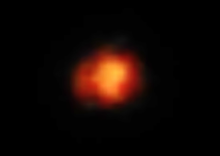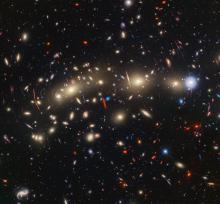Listen to today's episode of StarDate on the web the same day it airs in high-quality streaming audio without any extra ads or announcements. Choose a $8 one-month pass, or listen every day for a year for just $30.
You are here
Planning Ahead
James Webb Space Telescope is just getting started. Yet astronomers are already planning for future generations of space telescopes. It’s a process that can take decades.
Webb itself took a quarter of a century. Initial concepts were proposed in the 1990s. It took a while to get approval, then it took a lot longer than promised to get it built and launched.
The concept for the next big space telescope, called Nancy Grace Roman, was devised more than a decade ago. If things stay on schedule, it’ll launch in 2027. It saved some time by using a telescope that was built as a spy satellite, but was donated to NASA.
The process takes so long for several reasons. For one thing, it can take many tries just to get picked. For another, space telescopes are complicated, and each one is unique, so it takes more years to build one. It also takes a lot of testing — no one wants to repeat the mistake that blurred the view of Hubble Space Telescope. And it takes more time to launch and get checked out.
Astronomers outlined plans for several new missions at a recent conference. The list included CASTOR, to provide Hubble-quality views of wide slices of sky; Event Horizon Explorer, a combination of space- and ground-based telescopes to photograph black holes; and HEX-P, to study everything from black holes to dark matter. None is guaranteed to make it to space. And even if one does, it’ll be years or decades from now — a long lead time for a new view of the universe.
Script by Damond Benningfield





